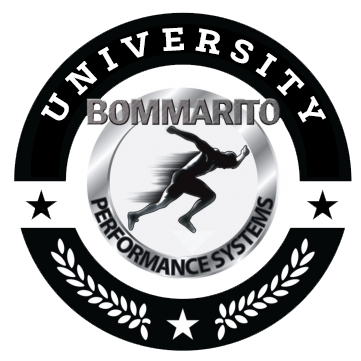When you think of training for strength or training for power, the general periodization progression shifts from strength into power. This transitions occurs after a basic hypertrophy phase and joint realignment phase has been established. Once the strength phase is successfully completed based on the required goals, the training can shift to a strength power phase. Then, the training shifts to a power phase before entering the strength endurance and power endurance continuum. Keep in mind, when utilizing this continuum, there will always be a strength endurance and power endurance component to each exercise. The difference is the ratio for each component.
Once the continuum is reached within the periodization model, the athlete first trains for strength endurance. In the diagram provided below, we laid out the continuum has it relates to sled pushing and pulling. Here, we can easily understand how to move along the continuum, with the end result or goal being power endurance. The continuum shows the progression from strength endurance to power endurance moving in order from push sled march, to bound, to jog, to sprint, to pull sled march, to sprint, to trainer resisted sprint, to light pulley resisted sprint. Typically, the more sprint resistance the exercise is the more strength endurance. The lower the resistance the sprint has the more power endurance until you reach a body weight free sprint or over-speed sprint.
First, we begin with the push sled low straight arm position march. This exercise is the most strength endurance exercise on the continuum, which is why it is the furthest to the left. As the exercise progress towards the right the more the exercise shifts away from strength endurance into more power endurance. For example, push sled bound mid height bent arm position is more strength endurance based than a push sled sprint high height straight arm position. In scientific terms, the longer the amortization phase the more strength endurance the exercise will be considered. In laymen’s terms, the less time the foot is in contact with the ground the more power endurance the exercise is considered.
When you consider the biomechanical differences between a push sled jog exercise where the hands are very mid or very high, you’ll find the foot is required to push longer on the ground in the low arm position than the high arm position. This is due to the the extreme ankle of the shin to the ground. Let’s say you take the same example and modify the athlete so his or her arms are either straight or bent. You’ll find that the ankle of the shin to the ground is less in the bent arm position (~40*), whereas the shin ankle to the ground in the straight arm position is greater (~50*).
Once the athlete reaches the push sled sprint mid level straight arm position, we would classify this point as being about a 50/50 percent split between strength endurance and power endurance. The training will now involve pull a sled in a slightly angled forward position. The shin angle while pulling the sled is far greater than the angle experienced in the predominately strength endurance based phase. As we move along the continuum towards the end, the resistance put on the sprinting motion decrease lighter and lighter.
The trainer is a type of pulley system that has a belt at both end of the rope. The rope passes through a machine that can be adjusted to create heavy amounts of friction or light amounts of friction. The machine can easily be adjusted to the desired resistance based on where the athlete falls on the continuum at that time. Similar to this in the light pulley resisted machine. This machine is designed to be used for over-speed (pulling the athlete as he/she sprints) or resisting a sprint with manual resistance. One end of the rope is anchored to a tree or pole, while the other end is secured to the belt that is around the athletes’ waist. This pulley is lighter than the trainer because even though the manual resistance may be pulling really hard, half of the tension is going to the anchor and the other half to the athlete. With this pulley, resistance can be very light which allows the athlete to have a small amortization phase, making it the most power endurance based exercise on our continuum.

